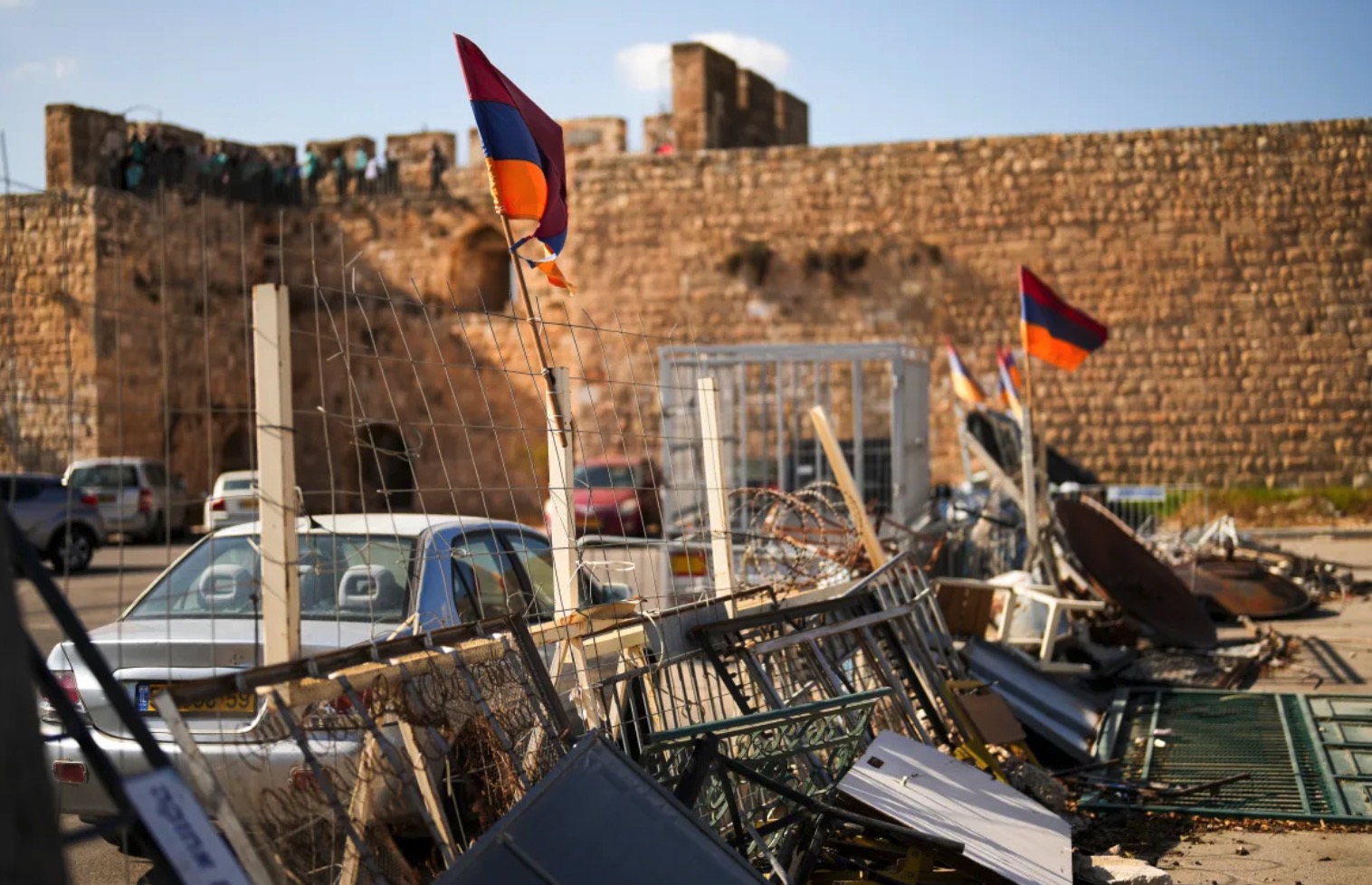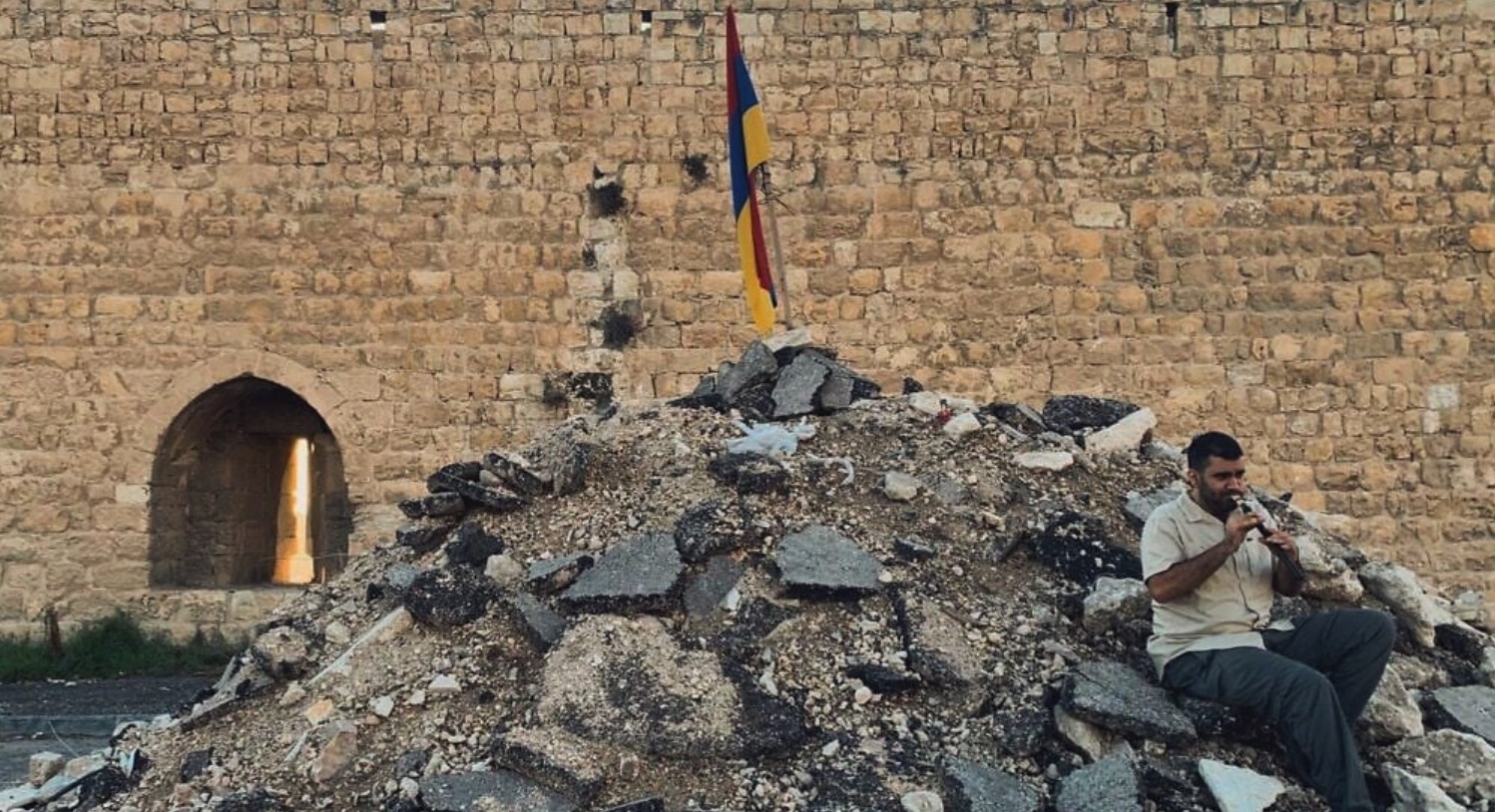Comments
ARMENIAN STRUGGLE - The Armenian people have a storied history stretching back thousands of years. From language and culture to religion and politics, Armenians have a distinct identity that has developed over centuries. Armenia was the first state to adopt Christianity on a national scale (in the 4th Century AD), and Armenian monks settled in Jerusalem soon, thereafter, founding an Armenian diaspora community that lasts until this day.
One of the oldest communities in Jerusalem, the Armenians have lived in the Old City for decades without significant friction with their neighbors, centered around a convent that acts as a welfare state.
Now, the small Christian community has begun to fracture under pressure from forces they say threaten them and the multifaith character of the Old City. From radical Jewish settlers who jeer at clergymen on the way to prayer, to a land deal threatening to turn a quarter of their land into a luxury hotel, residents and the church alike say the future of the community is in flux.
As the war in Gaza rages, Syria's government transforms, and the Israeli-occupied West Bank seethes, Armenian residents of the Old City of Jerusalem fight a different battle — one that is quieter, they say, but no less existential.
Their struggle, playing out under the cover of many regional crises, reflects the difficulty of maintaining a non-Jewish presence in a Jerusalem where life has hardened for religious minorities in the Old City. Chasms have emerged between the Armenian Patriarchate, the traditional steward of community affairs, and the mainly secular community itself. Its members worry that the church is not equipped to protect their dwindling population and embattled convent from obsolescence and takeover.
Their struggle, playing out under the cover of many regional crises, reflects the difficulty of maintaining a non-Jewish presence in a Jerusalem where life has hardened for religious minorities in the Old City. Chasms have emerged between the Armenian Patriarchate, the traditional steward of community affairs, and the mainly secular community itself. Its members worry that the church is not equipped to protect their dwindling population and embattled convent from obsolescence and takeover.

A major distress for Armenian Quarter residents is that it is the last undeveloped space of the Old City, a plot of 11.5 dunam (3 acres) that has been the focus of takeover efforts by Jewish settler organizations.
Walk through the narrow passageways of the Armenian Quarter, past a perpetually manned guard post and into an open lot with a towering pile of shrapnel crested with the Armenian flag.
It’s where some residents of the Armenian Quarter have decamped, in a structure with reinforced plywood walls hung with ancient maps, to protest what they see as an illegal land grab by a controversial real estate developer.
The land under threat is where the community parks their cars and holds group dinners. It also includes parts of the patriarchate itself. It’s been a receiving point for those fleeing the mass killing of some 1.5 million Armenians by Ottoman Turks, widely viewed by scholars as the first genocide of the 20th century. Turkey denies the deaths constituted genocide.
The deal also came about at a time when Christians and Muslims in the Old City and East Jerusalem are under pressure by Jewish settler groups trying to take control of properties with the explicit aim of Judaizing the city.
I know that the abuses by radicals do not represent the general attitude of Israeli society towards Armenians. Some groups of Israelis have visited the encampment site on multiple occasions to show solidarity. But this entire situation is endangering our valuable and longstanding presence in Jerusalem. Without international pressure on the Israeli government, Jewish religious leaders, and Israeli society, the Armenian community and the Armenian Patriarchate will continue to suffer these abuses.

In Jerusalem’s tense cultural politics, the Armenians are widely considered the most peaceful demographic in the Old City, maintaining good relations with both Jewish Israelis and Arab Palestinians. That unique status has been complicated by the fact that they are sitting on one of the Holy Land’s most valuable pieces of real estate.
Today, the Armenian Community of Jerusalem and the Armenian Patriarchate are united once more, in preserving the 1,700 years of Armenian presence in Jerusalem. The dispute is not only about a land deal but about preserving a great cultural heritage.
(Mihran Kalaydjian has over twenty years of public affairs, government relations, legislative affairs, public policy, community relations and strategic communications experience. He is a leading member of the community and a devoted civic engagement activist for education spearheading numerous academic initiatives in local political forums.)






